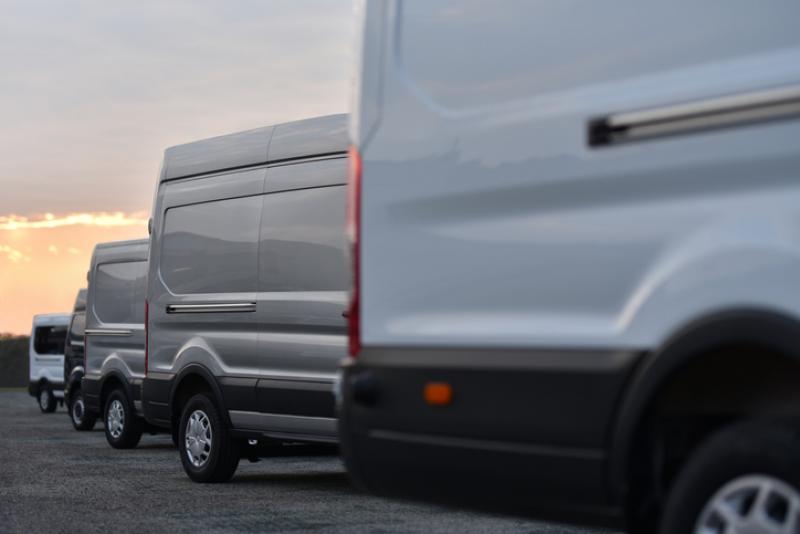How does the expression go? There’s nothing more certain than death and taxes. There’s one more thing to add to the list: vehicle depreciation

There are exceptions, particularly with some cars bought by collectors but, for the humble van owner, the fact is that as soon as your new or second hand vehicle hits the road it will start to fall in value.
With the exception of fuel for some users, depreciation is almost always the single biggest cost in running a van.
But there are ways to reduce depreciation – read on for our tips.
Vehicle choice
Some makes and models of van depreciate faster than others – for example, the Volkswagen Transporter will retain its value better than many of its competitors, but it may be more expensive to buy initially.
When buying a van, it’s worth researching advertised sale prices for equivalent used models – this will give you an idea of the relative depreciation costs and it could be that the more expensive van to buy initially may work out cheaper in the long run.
The used van market is often flooded with relatively basic models which have been used by fleets. This means higher specification vans are sought after and can command quite a premium. It’s worth considering a more luxurious trim level as much of the additional cost could be recovered – plus you’ll have the benefit of a nicer van during your ownership.
Specification
Some optional equipment substantially enhances resale value:
- Air conditioning: In huge demand and some fleets have seen the additional cost incurred for the option when new fully recovered some three or four years later when the van is disposed of
- Parking sensors: Vans are far more likely to be damaged when manoeuvring in tight situations and sensors will help to reduce or even eliminate unsightly scrapes and bumps which, if not repaired will seriously impact the value of the van
- Alloy wheels: Look great and will certainly add to the resale value of a van – but only if they’re not damaged. Best avoided if you work on site, park close to kerbs or are otherwise likely to damage the wheels, especially as repairs are expensive
In the case of a panel van, including plywood lining is vital. No matter how careful you are, without this additional protection the sides of the van will be damaged by a shifting load, resulting in those ugly dents visible from the outside. These are expensive to repair and will considerably devalue the vehicle.
If you need to fit external racking, try to ensure it doesn’t require holes drilling into the van. These tend to rust and look unsightly once the rack is removed.
Although fitting (and removal) can be expensive, a full vinyl wrap could prove beneficial. Allowing a specific ‘house’ colour or livery without repainting, the wrap also does a great job of protecting the paintwork leaving the van looking like new when it’s ready to find a new owner.
When to buy
If you’re contemplating a new van, there are three dates to bear in mind – 1 March and 1 September see a change in registration prefix, and 1 January would mean your van would be, say, 2021 registered rather than 2020.
All these age indicators have an influence on value, so for the sake of a few weeks’ delay, you could benefit from lower depreciation.
Keeping an eye on things…
It’s easy to take your eye off the ball after the initial euphoria of getting that shiny new van wears off, but there are several things you can do to protect your investment and maintain its ultimate resale value.
- Maintenance and servicing: If you can prove the van has been serviced regularly, on time, and especially by a franchised dealer, the van will command a higher price than one with a more ‘patchy’ history. This attention to detail will also demonstrate that you’ve looked after the van
- Mileage: This has a huge bearing on vehicle value so if journeys can be combined and routes planned carefully, your overall mileage (and fuel bills!) could be significantly reduced
- Repairs: It’s a good idea to get any knocks and scrapes repaired quickly. Why? Because old damage can rust, causing more problems later. Also, the longer they’re left, the more likely the bumps won’t get fixed at all, leading to a reduced sale or part exchange price
Budgeting for depreciation
Frustratingly, depreciation can be hard to predict. While most running costs can be forecast, how much your van will be worth at the time you decide to change can be tricky to forecast.
Leasing a van means that, for the most part you don’t need to worry about this – the vehicle is returned to the funder at the end of the lease period and they take the risk as to what the residual value might be. Your monthly rentals are effectively paying for the depreciation the finance company forecast.
However, if the vehicle has any damage when it’s returned, you’ll receive an invoice for repair. In addition, at the start of the agreement, you’ll need to forecast your annual mileage. Go too low and you’ll get a bill, but if you estimate too high, you’ll have paid too much and there won’t be a refund.
I started my career selling vans in the mid-eighties, progressing through dealer groups to management level. In 2010 I joined vehicle valuation company CAP, being made responsible for forecasting future used values for all makes and models of vans and trucks, this data being used by leasing companies and manufacturers to assess future risk. This role entailed very early exposure to new models including extensive testing across Europe.
In 2016 I started up my own consultancy business dedicated to the LCV industry. In addition, my freelance written work has been used by a number of clients and I am a regular contributor to WhatVan? magazine. I’m also a judge for their annual ‘Van of the Year’ awards.
To relax, I enjoy travel and walking near my Yorkshire home.
